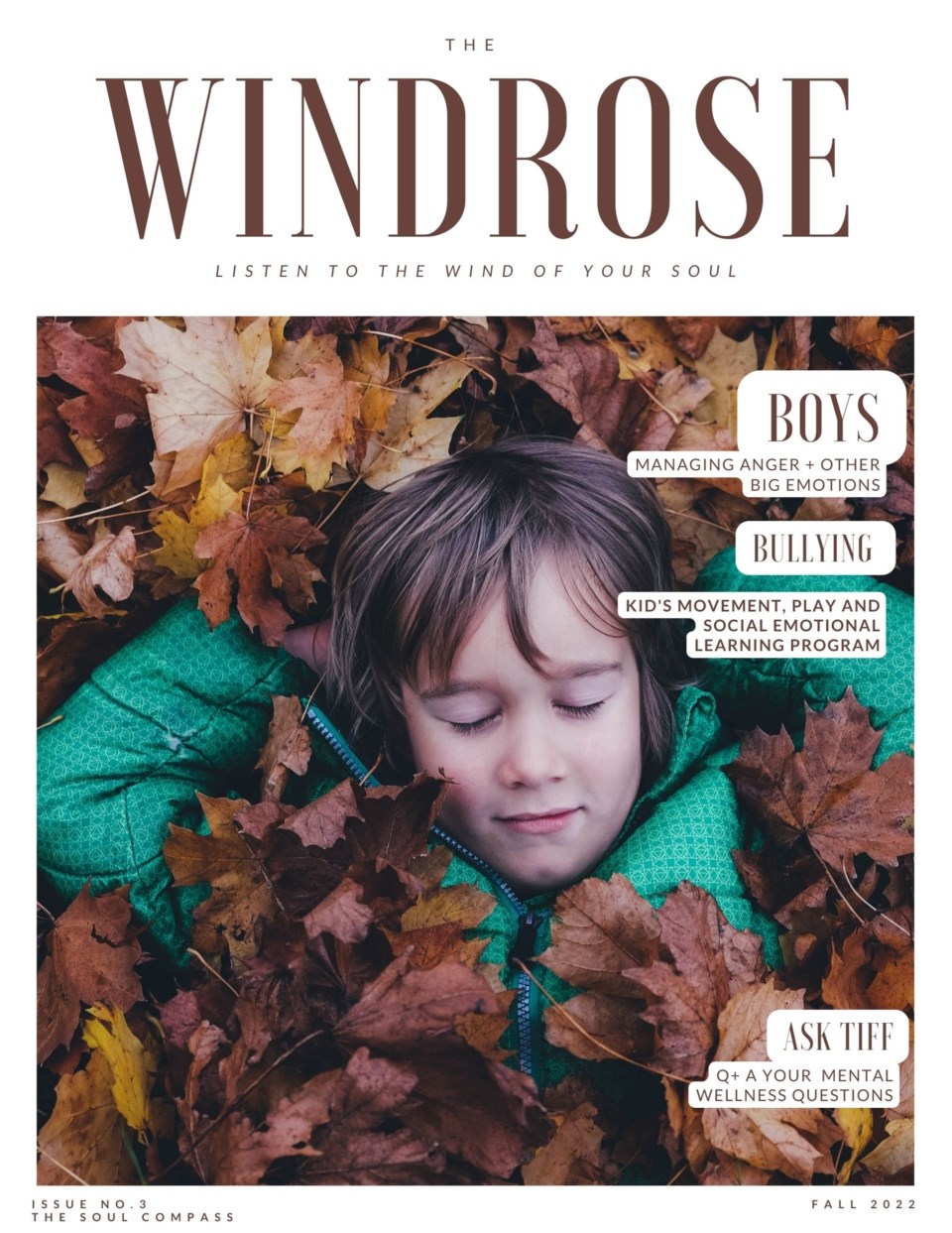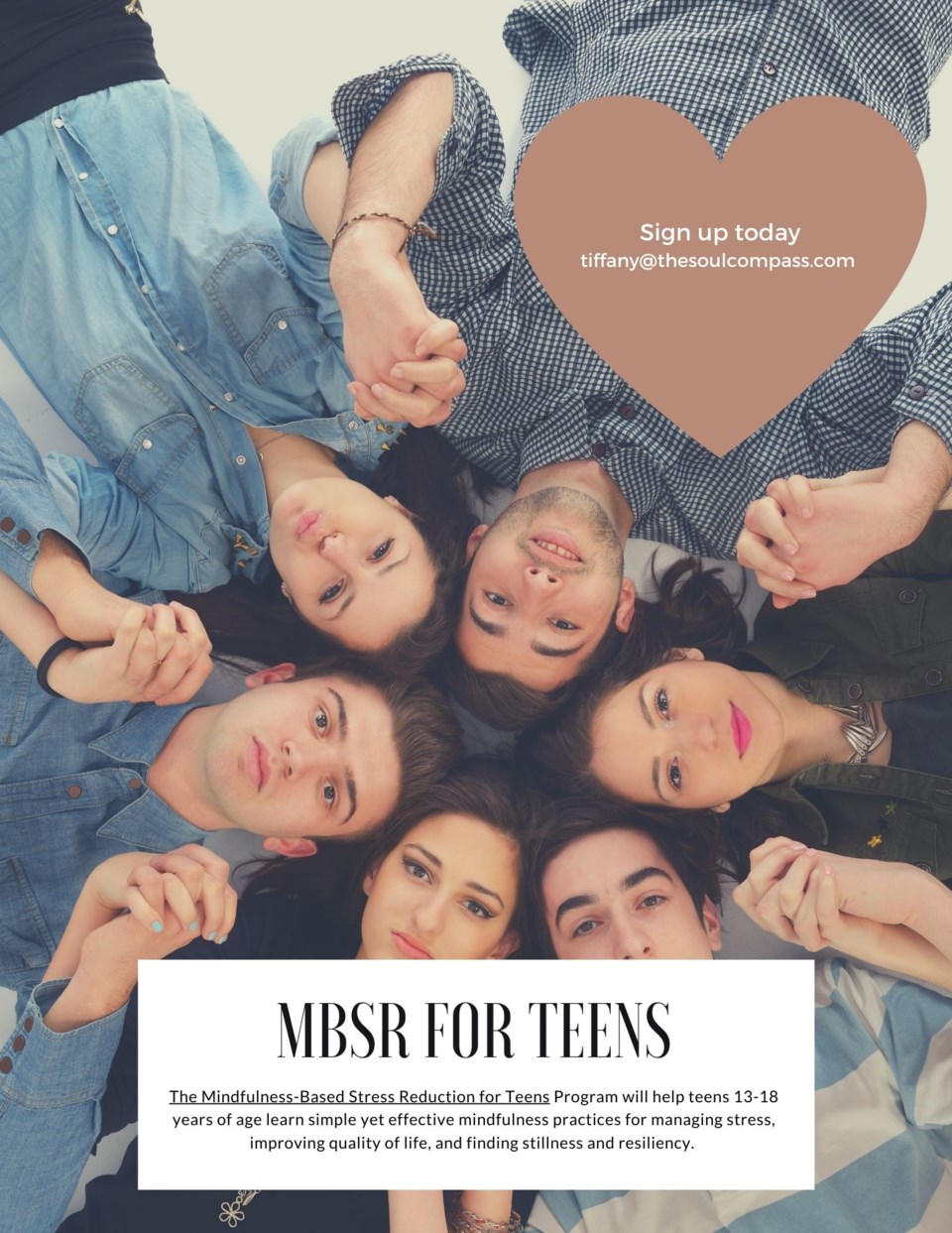As the new school year begins, the uncertainty of new social experiences, coupled with the pressure of academics can be daunting for young learners. For many children and teens, peer pressure and interpersonal conflict may also trigger excessive anxiety.
Tiffany Caicco, owner of The Soul Compass in Sault Ste. Marie, is a registered psychotherapist, art therapist, and play therapist.
Tiffany, who specializes in counselling and coaching kids, teens, and couples, works with individuals of all ages. Based on her experience, Tiffany sees anxiety as the most pressing problem for kids. She said, “In the past few years, I’ve experienced an increase in calls from parents looking for therapeutic services to help their children and teens manage anxiety caused by interpersonal conflict, peer pressure, and bullying/cyberbullying.”

Stress easing strategies
Tiffany’s go-to therapy for anxiety is Cognitive Behavioral Therapy (CBT). Depending on the child, she also incorporates strategies that promote healthy and safe boundary setting, becoming more assertive, communications skills, and relaxation methods to calm the mind and body. “The key is to offer evidence-based coping strategies that meet their developmental needs,” she said.
What is Cognitive Behavioral Therapy?
Cognitive Behavioral Therapy is a practical, short-term form of psychotherapy designed to help people to develop skills and strategies for becoming and staying healthy. Tiffany said, “CBT is the golden standard for treatment of anxiety, and I have tremendous success with my CBT program.”
CBT focuses on day-to-day life problems. Given that moderate to severe anxiety, loneliness and depression are increasing in children, teens, and young adults, effective coping strategies become life-long skills. Tiffany said, “Not all anxiety is the same. In the past year alone, I’ve encountered more children with severe types of anxiety and even phobias.”
Helping individuals overcome debilitating fears
Phobias can cause paralyzing fears, but they can be managed and overcome with proper strategies. Tiffany said, “I specialize in anxiety disorders, including a variety of common and more unusual phobias which include:
- Ombrophobia: The fear of rain
- Arachibutyrophobia: The fear of peanut butter on the roof of your mouth
- Hypnophobia: The irrational fear of falling asleep
- Ablutophobia: The overwhelming fear of bathing or washing
Tiffany said, “I’ve also worked with children and teens who’ve experienced generalized anxiety disorder/chronic worry, trichotillomania, social anxiety, chronic pain, functional illness, obsessive compulsive disorder, selective mutism, Tourette’s Syndrome and tic disorders.”
Depending on her client, the strategies might include exposure therapy, CBT, yoga movement, mindfulness, relaxation breathwork and usually art and play.
“Play” at times is the best therapy
For children, the integration of creative therapies with CBT is a must, as it improves the therapeutic outcome. New to Tiffany’s therapy room is a playhouse that she calls “The House.” Tiffany’s art and play space also include a sand tray, puppet theatre, and art centre. She said, “When I combine CBT therapy with the creative aspect, children are more relaxed and engaged, and they integrate the learnings in a way that’s meaningful to them.”
Children will use play to work through their fears and anger. Tiffany said, “Art and play therapy is such an effective treatment option when combined with CBT.”
Her teenage clients aren’t as keen on the playroom. Still, they do appreciate the art space and Tiffany said, “They thrive with Dialectical Behavioral Therapy (DBT), a form of cognitive therapy. Tiffany recently completed a certification in DBT.
DBT, a mindfulness-based cognitive therapy, encourages living in the moment and paying attention to what is happening around you. It helps teens (and adults) slow down, stay calm, tolerate distress, and focus on healthy coping skills. Tiffany said, “DBT can be effective in helping teens manage intense emotions, and urges, and is one of the best therapies to change unhelpful ways of thinking.”
MAPs + MBSR-teens

This October, Tiffany is running a mindfulness program for kids ages 6-12 called MAPs and a Mindfulness-Based Stress Reduction program for teens, (MBSR-t).
For more information you can read Tiffany’s newsletter The Windrose.
To register for courses, please visit The Soul Compass online. Ask Tiffany how your insurance might cover the cost.
